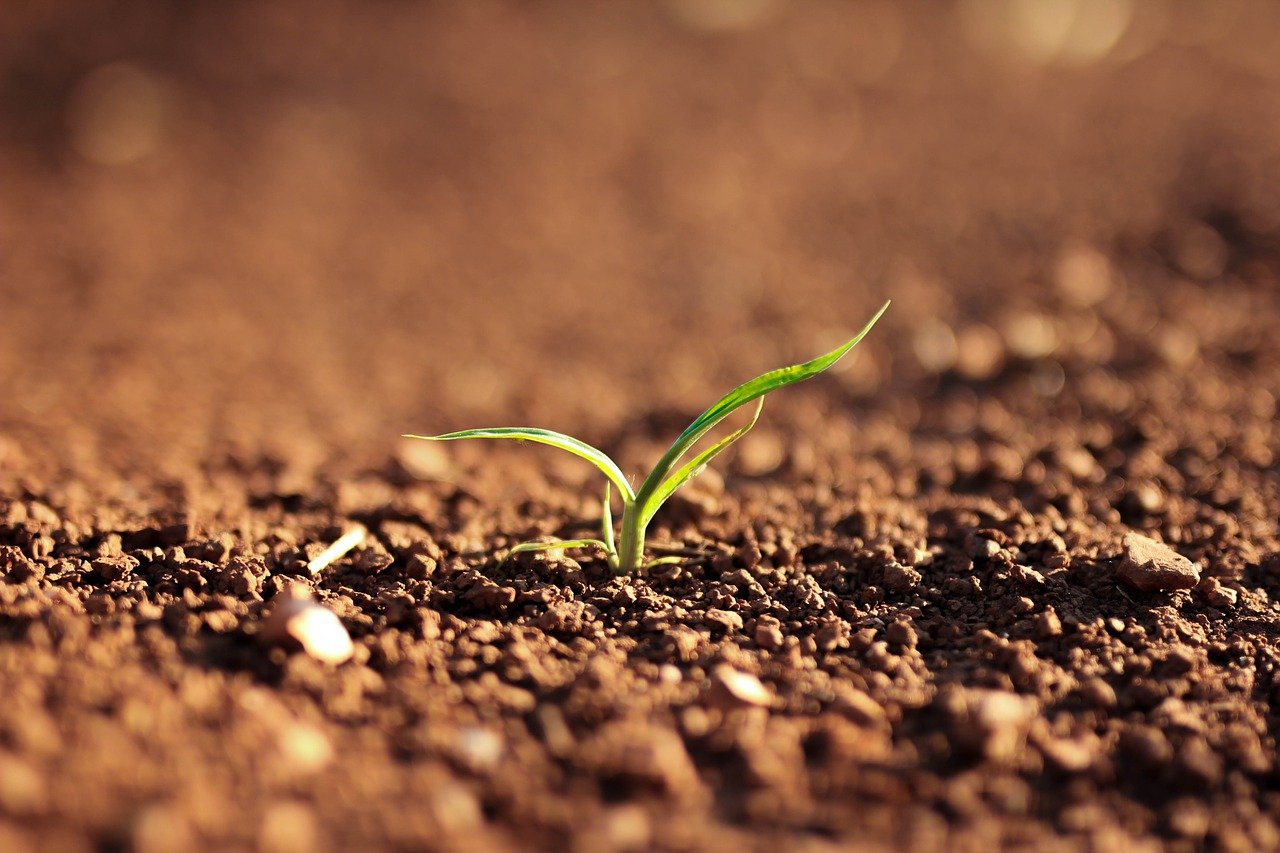Components of soil
The soil consists of four major components i.e., mineral matter, organic matter, soil air and soil water. Volumetric composition of mineral (inorganic) soil:
1. Mineral matter 45%
2. Organic matter 5%
3. Soil water 25%
4. Soil air 25%
Macroorganisms like rodents, insects and worms and microorganisms like bacteria, fungi and algae live in soil in large numbers. There is a three phase system in which the mineral and organic matter form the solid phase, the water containing salts and some gases in solution the liquid phase, and the various gases the gaseous phase. Each phase contains a number of constituents which makes the whole system highly complex. On account of the changes continually taking place in the soil, the system is never in equilibrium.
1. Mineral matter
The minerals are extremely variable in size. Some are as large as the smaller rock fragments; others, such as colloidal clay particles, are so small that they cannot be seen without the aid of an electron microscope. Quartz and some other primary minerals (biotite, muscovite etc.) have persisted with little change in composition from the original rock. In general, the primary minerals dominate the coarser fractions of soil. Secondary minerals (silicate clay, limonite, haematite etc.) are prominent in the fine materials, especially in clays. Clearly, mineral particle size do much effect on the properties of soil.
2. Organic matter
Soil organic matter represents partially decayed and partially synthesized plant and animal residues. Such material is continually being broken down by the action of soil microorganism. Consequently, organic matter is a transitory soil constituent and renewed constantly by the addition of plant residues. Organic matter influences -soil properties and consequently on plant growth. Organic matter functions as a granulator mineral particles. It is responsible for the loose, easily managed condition of productive soils. Organic matter improves the physical condition of soils, it also increases water-holding capacity. It is a major source of plant nutrients i.e., nitrogen, phosphorus and sulphur. Finally, organic matter is the main source of energy for soil microorganisms.
3. Soil water
Soil water is the major component of the soil in relation to the plant growth. The water is held within the soil pores. If the moisture content of a soil is optimum for plant growth, plants can readily absorb the soil water. Not all the water, soils can hold is available to plants. Much of water remains in the soil as thin film. Soil water dissolves salts and makes up the soil solution, which is important as a medium for supplying nutrients to growing plants. There is an exchange of nutrients between the soil solids and the soil solution and then between the soil solution and plants.
4. Soil air
A part of the soil volume that is not occupied by soil particles, known as pore space, is filled partly with soil water and partly with soil air. As the pore space is occupied by both water and air, volume of air varies inversely with that of water. As the moisture content of the soil increases, the air content decreases and vice-versa.
The soil air contains a number of gases viz., nitrogen, oxygen, le and water vapor. Soil air differs from the atmosphere in several respects. First, soil air contains- much greater proportion of carbon dioxide and a lesser amount of oxygen than atmospheric air. Second, soil air has a higher moisture content than the atmosphere.
The content and composition of soil air is determined to a large degree by the soil-water relationships. Following a rain, large pores are the first vacated by the soil water, followed by medium-sized pores as water is removed by evaporation and plant utilization. Thus, the soil air ordinarily occupies the large pores. As soil further dries up, medium size pore spaces copy the soil air.
Soil air has marked effect on the plant and their root growth. It has also effect on soil microorganism, plant nutrients, formation and their availability.
You might interest more articles about Soil Science
Useful Agricultural Websites
